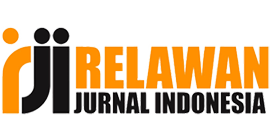Praktik Pemberian Makanan dan Praktik Kesehatan dengan Kejadian Balita dengan Gizi Kurang
DOI:
https://doi.org/10.31539/joting.v3i1.2091Abstract
This study aims to determine the relationship between feeding practices and health practices for under-five children with malnutrition in Sekip Village, Lubuk Pakam District, Deli Serdang Regency. This study used a cross-sectional approach with a sample size of 100 respondents. Sampling was done using cluster technique and simple random technique (roll of paper). The resulting data were analyzed univariate and bivariate using the chi-square test (α = 0.05). The results showed that under-fives who experienced malnutrition were 34%. Simultaneously, mothers' feeding practices and health practices to children under-five were partly categorized as bad, namely 56 people (56%) and 54 people (54%). In conclusion, there is a relationship between feeding practices and health practices on undernutrition in children under-five.
Keywords: Toddler, Malnutrition, Health Practices, Feeding Practices
References
Akbar, F., Ambohamsah, I., & Amelia, R. (2021). Modifikasi Makanan untuk Meningkatkan Gizi Balita di Kabupaten Polewali Mandar. Jurnal Kesehatan Kusuma Husada, 3(1), 94–102. https://doi.org/10.34035/jk.v12i1.614
Alamsyah, D., Mexitalia, M., Margawati, A., Hadisaputro, S., & Setyawan, H. (2017). Beberapa Faktor Risiko Gizi Kurang dan Gizi Buruk pada Balita 12-59 Bulan (Studi Kasus di Kota Pontianak). Jurnal Epidemiologi Kesehatan Komunitas, 2(1), 46–53. https://doi.org/10.14710/jekk.v2i1.3994
Jawad, I. H., Al-Jubori, K. H., & Baiee, H. A. (2018). Prevalence and Associated Factors of Under Nutrition Among Under-Five Children in Babylon Province, Iraq, 2016. Journal of University of Babylon for Pure and Applied Sciences, 26(3), 123–153. https://doi.org/10.5958/0974-360X.2017.00363.8
Kurdaningsih, S. V. (2018). Hubungan Pemberian Makanan Pendamping dengan Status Gizi pada Balita Usia 6-24 Bulan. Jurnal Ilmiah Multi Science Kesehatan, 9(1), 109–115. https://doi.org/10.36729/bi.v9i1.124
Mitra, M., Septiani, W., Susmaneli, H., & Nurlisis, N. (2019). Meningkatkan Status Gizi Balita Melalui Praktek Pengolahan Makanan Pendamping ASI Buatan Sendiri. Dinamisia : Jurnal Pengabdian Kepada Masyarakat, 3(2), 208–213. https://doi.org/10.31849/dinamisia.v3i0.4169
Mustika, W., & Syamsul, D. (2018). Analisis Permasalahan Status Gizi Kurang pada Balita di Puskesmas Teupah Selatan Kabupaten Simeuleu. Jurnal Kesehatan Global, 1(3), 127–136. https://doi.org/10.33085/jkg.v1i3.3952
Puspa, A. R., & Rahmawati, L. A. (2020). Praktik Pemberian Makan dan Perawatan Kesehatan Anak di Kelompok Bermain Al Azhar 1. Jurnal Al-Azhar Indonesia Seri Sains dan Teknologi, 5(3), 136–143. https://doi.org/10.36722/sst.v5i3.376
Supriatna, N. K., & Muliawati, D. (2018). Faktor yang Mempengaruhi Gizi Kurang Balita di Desa Kepek dan Karang Tengah Wonosari Gunungkidul Yogyakarta. Jurnal Kesehatan Madani Medika, 9(1), 7–14. https://doi.org/10.36569/jmm.v9i1.27
Symon, B., Crichton, G. E., & Muhlhausler, B. (2017). Does the Early Introduction of Solids Promote Obesity? Singapore Medical Journal, 58(11), 626–631. https://doi.org/10.11622/smedj.2017024
Wang, Y., Min, J., Khuri, J., & Li, M. (2017). A Systematic Examination of the Association between Parental and Child Obesity Across Countries. American Society for Nutrition, 8(1), 436–448. https://doi.org/10.3945/an.116.013235


